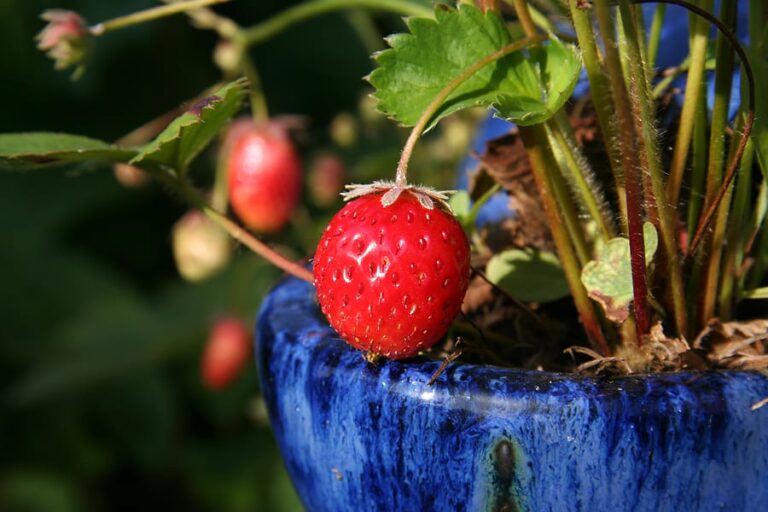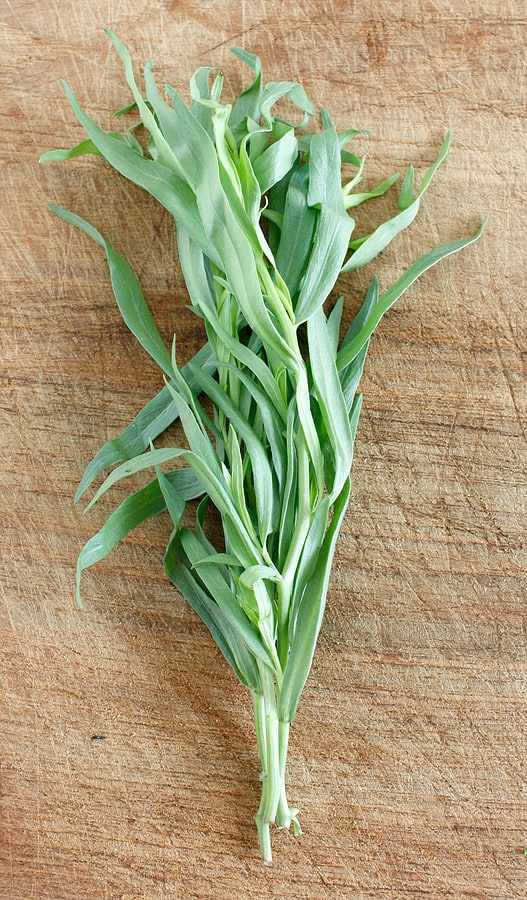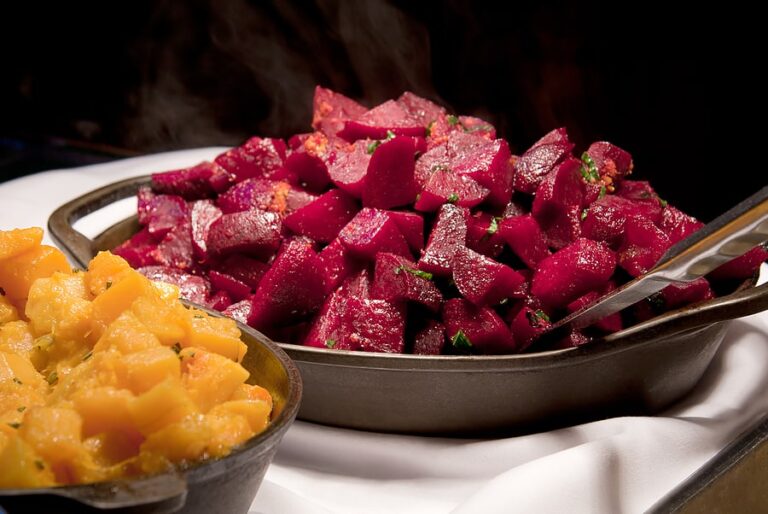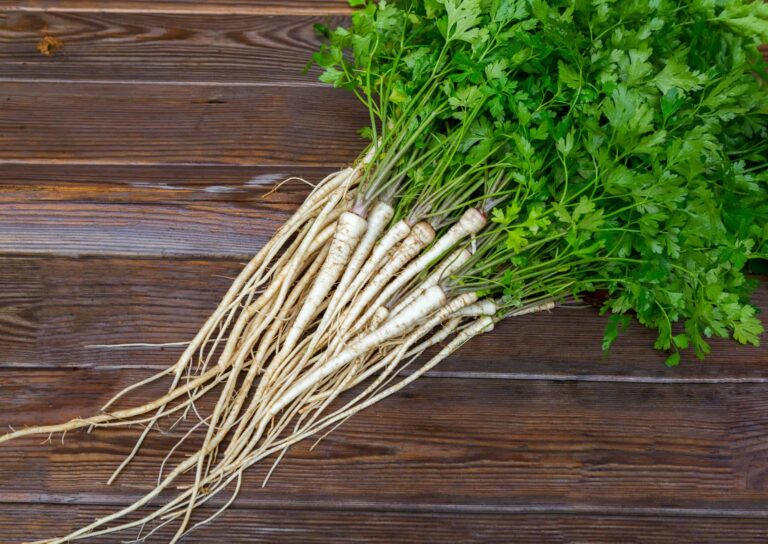Five Ways to Cook and Serve Fava Beans
The fava bean—which is also known as the broad bean, English bean, Windsor bean, and horsebean–can be eaten fresh or dried.
As fava beans mature, their flavor grows increasingly starchy and strong. The smallest beans—less than the size of a small fingernail—are the sweetest. The outer skins of medium- and large-sized fava beans have a high tannin content that makes them increasingly bitter tasting as they mature.
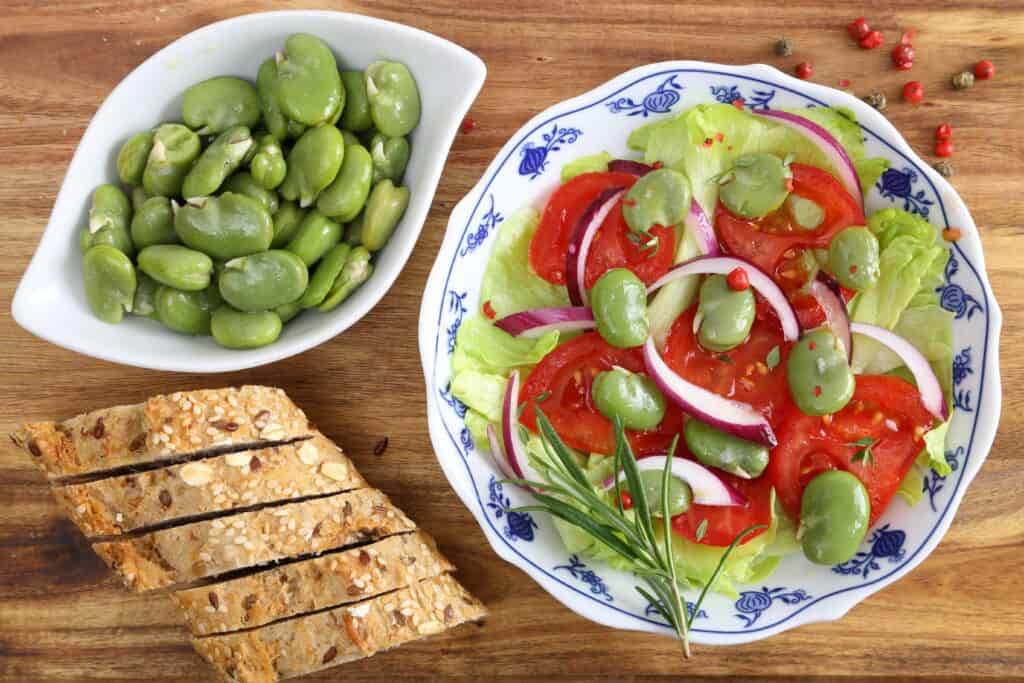
The best way to determine how bitter or sweet a fava bean is to open the pod, peel away the skin, and taste the bean. Bitter-tasting fava beans are not bad in all cultures.
The fava bean, like asparagus, peas, and artichokes, is a harbinger of spring. It is one of the first vegetables harvested each year.
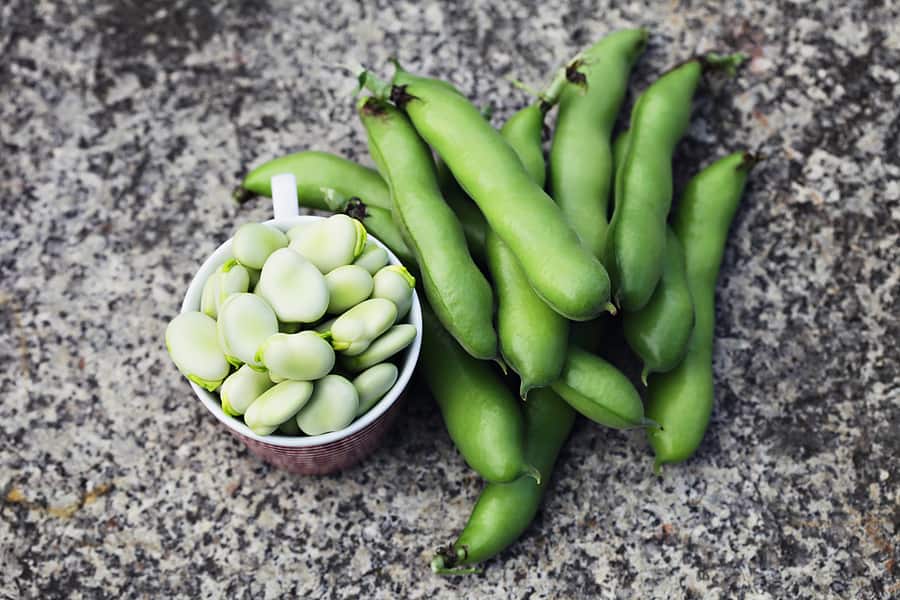
Choosing fava beans
- Select fava beans that are light to bright green and whose pods are evenly developed. Early fava beans will be pale green and smooth-podded.
- Small fava beans–2-3 inches/ 5-7 cm–are tender and have a sweet flavor. You can eat them raw or cooked shelled or pod and all.
- Medium-sized favas can be shelled and used fresh like English peas. Cook them quickly in a little water or lightly steam them and serve with butter. They are right for shelling when the pods are plump.
- Large fava beans—pods as long as 12 inches (30 cm)–are best used as a dry bean. Dry, shelled fava beans can be soaked, boiled until tender, and used cold, whole, or puréed in salads and appetizers.
- As favas mature, they will turn yellowish-green and the pods will become lumpy. The beans inside, however, will still be green. The oldest beans have the most yellow pods.
- Avoid pods that are wrinkled or have blackened ends. To check for the freshness of a fava, open a pod: the downy lining inside should be moist.
How to store fava beans
- Unshelled fava beans will keep in the refrigerator in a plastic bag or paper sack for about 10 days.
- Dried-shelled fava beans can be stored in a cool, dry place for 10 to 12 months.
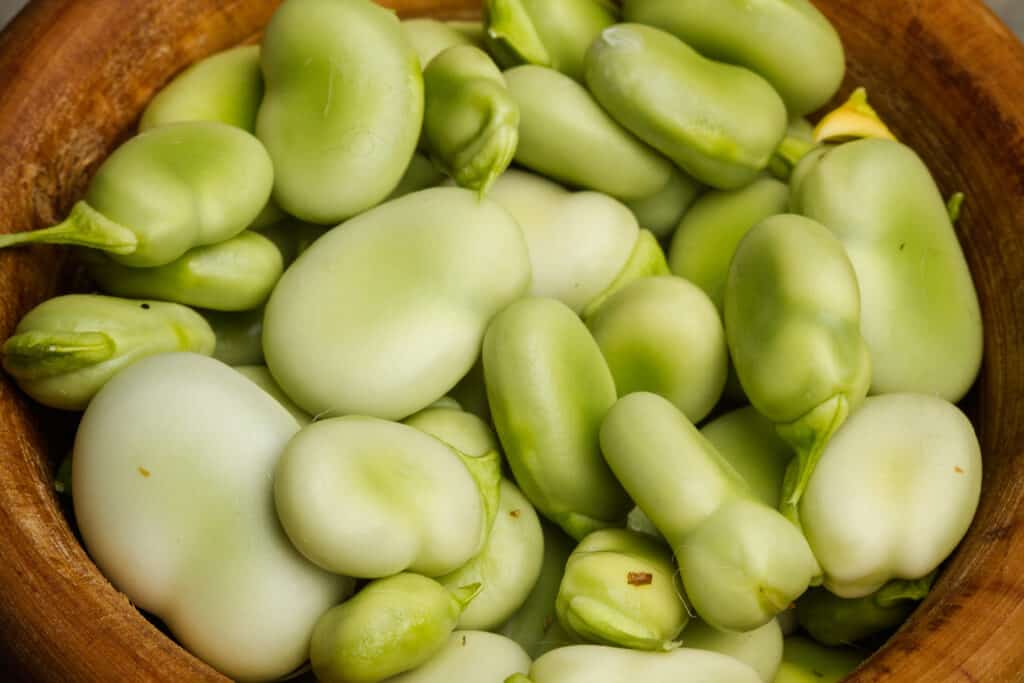
How to prep fava beans
- Open fava bean pods along the seams on each side as you would a string bean. Then put the beans in boiling, salted water for 30 seconds, drain, and drop in ice water (to stop further cooking). Slice the whitish skin around each bean with a fingernail and pop out the bean.
- Young small fava beans can be cooked and eaten unpeeled. For larger beans place the pods in 1 inch of boiling water in a skillet and cook gently until tender about 4 or 5 minutes. Snip off the tips and squeeze each bean out of its skin.
Fava bean serving suggestions
- Favas beans can be eaten fresh or dried.
- Prepare immature and mature seeds in the same way as green or dry lima beans.
- Fresh young fava beans can be served in the pod without cooking and served like nuts dipped in coarse salt.
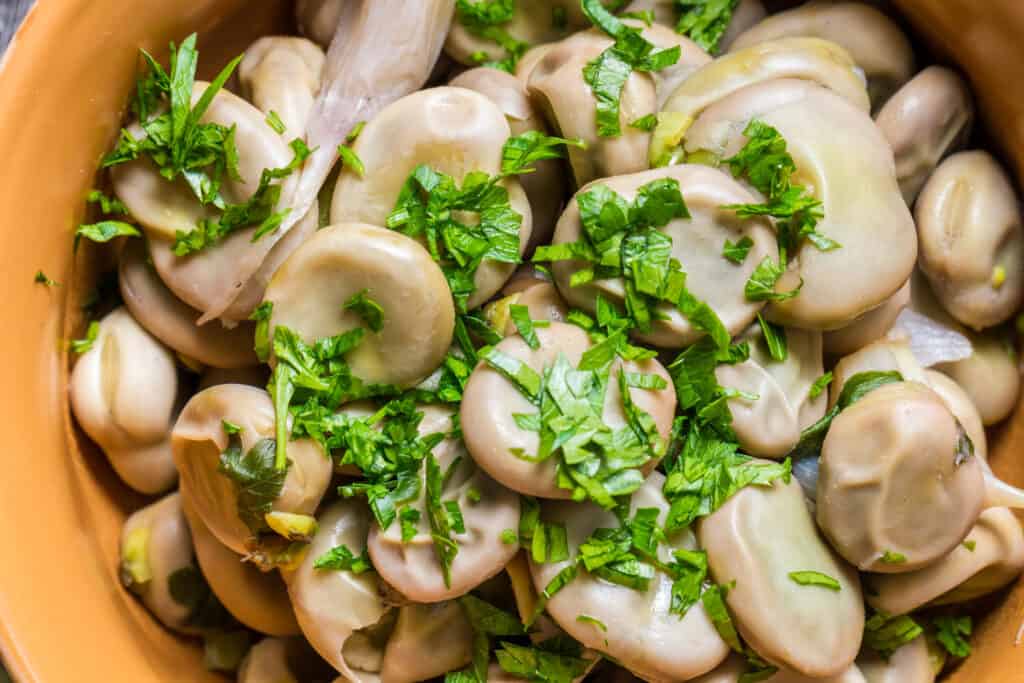
Fava bean cooking suggestions
- Fresh or dried fava beans can be cooked with or without their skin. Fresh beans should cook for about 20 minutes. Whole dried beans should cook for about 2½ hours. Skinned dried beans that have soaked for 8 to 12 hours will cook for about 1½ hours.
- Cook and eat immature pods like edible pod peas. Tender, small beans may be steamed or boiled like lima beans or English peas.
- Large fava beans should be skinned before eating: to remove the skin, plunge the shelled bean in boiling water for a few minutes, drain, and rinse under cold water allowing the skin to slip off. The skins of beans soaked for 12 to 24 hours (change the water frequently) also will slip off easily.
- Serve raw favas with coarse salt, pepper, and olive oil.
- Marinate raw favas in oil, lemon juice, and freshly chopped dill for 24 hours.
- Serve steamed fava beans with a light white or cheese sauce.
- Top steamed fava beans with a little sautéed parsley, garlic, and onion.
- Purée large cooked favas add cream, butter, and a little lemon juice.
- Fava beans can be prepared in any way that lima beans can. (Fava beans are often grown in regions where the weather is too cool for lima beans.)
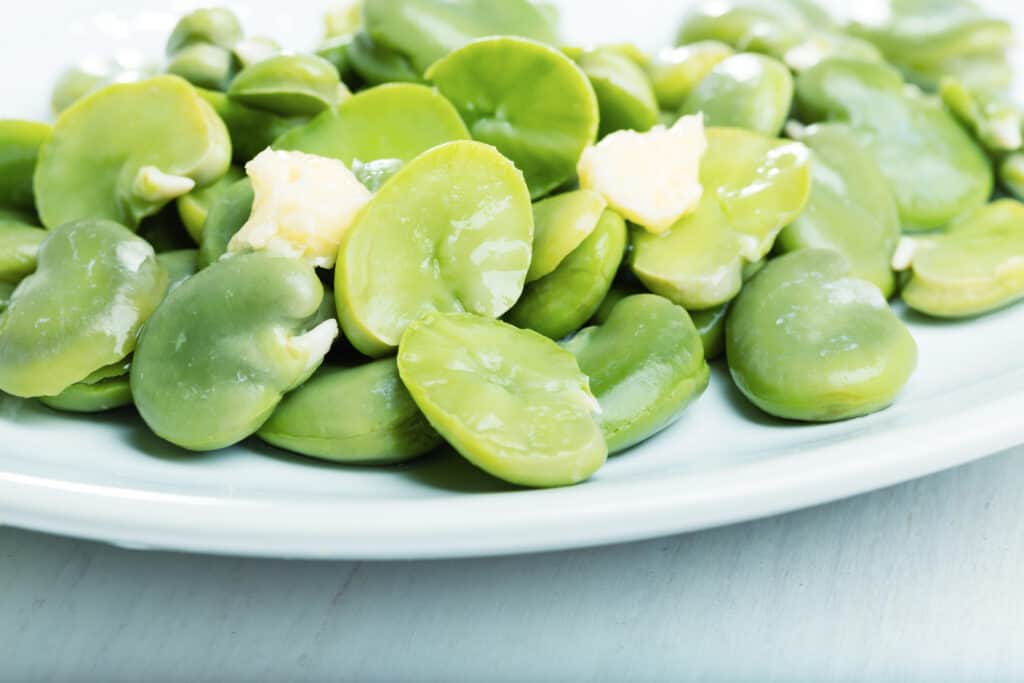
How to boil fava beans
- Shell the beans and wash them well.
- Bring a saucepan or pot of lightly salted water to boil and put the beans in the water.
- Cover and boil the beans until just tender, about 10 to 20 minutes depending on the size of the beans.
- Drain; if the skins seem tough, you will need to slip the skins by pouring cold water over them and removing the outer skin of each bean.
- Serve hot (reheat if necessary) with butter, or olive oil, garlic, and a spritz of lemon juice or seasoning.
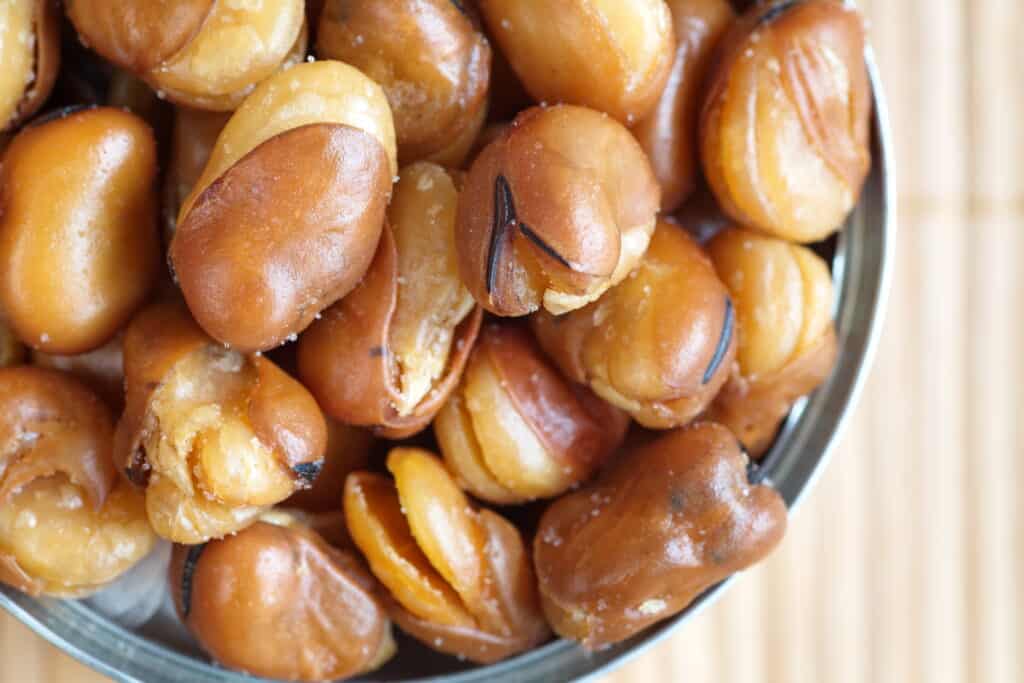
How to sauté fava beans
- Boil as directed above and drain.
- Return the beans to the saucepan and add butter–enough to coat the beans.
- Shake (sauté) over medium heat until the beans are coated with butter.
- Add salt and freshly ground pepper to taste and serve with chopped parsley.
How to make garlicked fava beans
- Boil as directed above and drain and remove the skin if they are tough.
- Heat a thin layer of olive oil in the bottom of a heavy skillet.
- Add a few cloves of chopped garlic and a half cup of finely chopped onions and saute 3 t 4 minutes.
- Add finely cut basil and pepper and toss well with the beans.
- Spoon into a heated serving dish and sprinkle with freshly grated Parmesan cheese and chopped parsley.
How to steam fava beans
- Remove the pods from the fava beans. Peel the skins for very tender steamed beans.
- Put one or two inches of water in a pot and lightly salt.
- Set a steamer basket in the pot; be sure the bottom of the basket does not touch the water.
- Place the beans in the basket and sprinkle them with thyme.
- Cook them until the beans are tender, 5 to 15 minutes depending on the size of the beans.
- Transfer the beans to a warm serving bowl, add the butter and salt, and pepper to taste.
- Serve hot or warm.
Fava bean flavor partners
- Fava beans go well with bacon, broccoli rabe, chiles, cilantro, cumin, curry, duck, garlic, ham, mustard greens, onions, oregano, sage, shallots, smoked turkey, thyme, and tomatoes.
Fava bean nutrition
- Fava beans are a good source of folic acid, potassium, and magnesium. They contain vitamins A, B, and C, iron, and dietary fiber.
Fava bean health note
- Eating fava beans or inhaling fava pollen can have a potentially fatal effect on some people of southern European ancestry. The symptoms include muscle weakness and paralysis. This inherited disorder is called Favism.
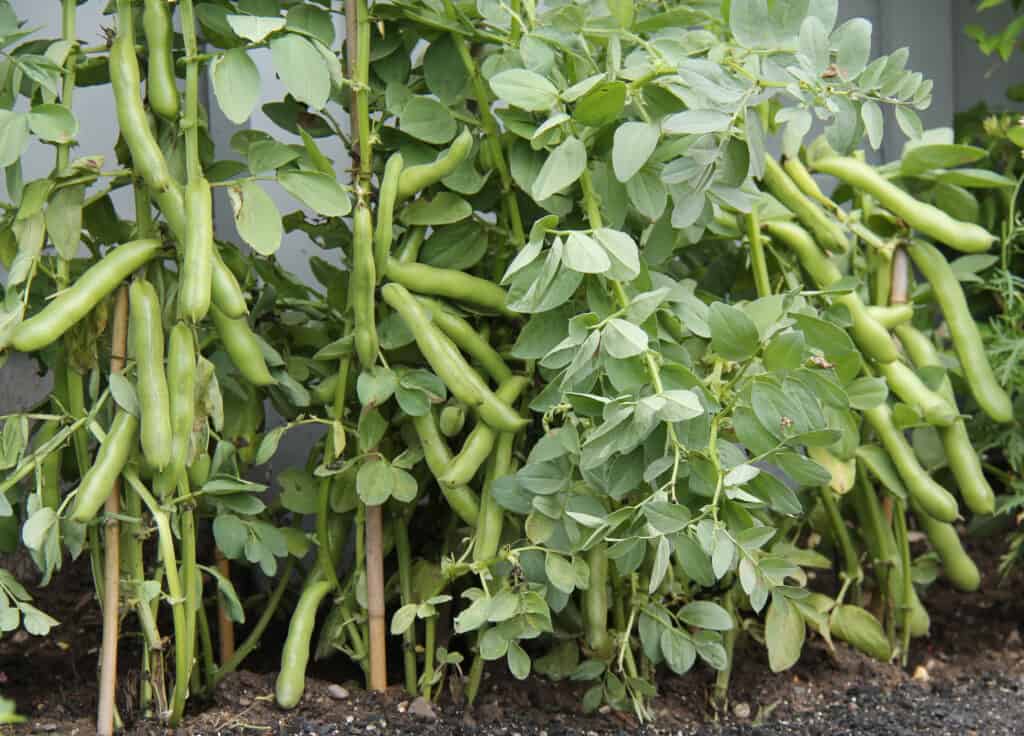
Get to know fava beans
- The fava bean is a cool-weather annual that grows upright and bushy to about 24 to 48 inches (60-122 cm) tall. The stems are squared and the leaves are blue-green. Short-podded varieties hold 4 beans or seeds and long-podded varieties hold 6-8 beans.
- Fava bean pods are large and flattened to about 8 inches (20 cm) long and 1 inch (2.5 cm) wide—although some pods grow to more than 12 inches (30 cm) long. Inside each pod, the beans are protected by a white downy-like lining. Individual beans are ¾ to 2 inches (1.9-5 cm) long.
- Because the fava bean is the only bean native to the Old World–all other beans are indigenous to Central and South America, it is in common culinary use from China to Spain.
- Where exactly the fava bean got its start is unclear. Some believe it originated in the Mediterranean region, perhaps North Africa. The ancient Hebrews and Egyptians cultivated fava beans and so did the Greeks and Romans.
- But the fava bean also appears in the cookery records of ancient China where it has been in cultivations for more than 5,000 years ago.
- The fava bean got its botanical name from the Latin word for bean faba. The English gave the fava bean its “broad bean” name, broad meaning common. The fava bean is sometimes called a horse bean because it is so big.
The botanical name of the fava bean is Vicia faba.
Fava Bean Learning Hub
Start here: The Ultimate Fava Bean Growing Guide: From Seed to Harvest
Planting & Growing Basics
- Fava Bean Planting Time by Region
- How Deep and How Far Apart to Plant Fava Beans
- Fava Companion Planting Guide
- Growing Fava Beans in Containers
Soil, Water, and Feeding
- Best Soil for Fava Beans and How to Prepare It
- How to Water Fava Beans for Best Growth
- Feeding Fava Beans Naturally: Compost and Nitrogen Fixing
Care & Maintenance
- How to Care for Fava Beans During the Season
- Managing Weeds Around Fava Beans
- Supporting Fava Beans: Do They Need Staking?
Pest & Disease Management
Harvest, Storage & Preservation
- How to Tell When Fava Beans Are Ready to Harvest
- How to Dry Fava Beans for Long-Term Storage
- How to Store and Preserve Fresh Fava Beans
Varieties & Seed Saving
Cooking & Using Fava Beans
Companion & Related Crops
- Growing Snap Beans vs. Fava Beans: What’s the Difference?
- How to Grow Chickpeas and Garbanzo Beans
- Mastering Chickpeas: Planting, Growing, and Harvesting Tips
- How to Plant, Grow, and Harvest Lima Beans
- How to Grow Lima Beans for Warm Climates
Also of interest:
Related articles:
How to Plant and Grow Snap Beans
How to Harvest and Store Snap Beans
Bean Growing Problems: Troubleshooting
Five Ways to Quick Cook and Serve Snap Beans
How to Can Green Snap Beans for Beginners
Cooking and Serving Yard-Long Beans
How to Grow Plant, Grow, and Harvest Chickpeas and Garbanzo Beans
How to Cook and Serve Chickpeas
How to Plant and Grow Lima Beans
How to Plant, Grow, and Harvest Broad Beans and Fava Beans
Five Ways to Cook and Serve Fava Beans
All About Dried Beans – Growing and Cooking
Container Growing Beans – Plant, Grow, and Harvest Tips
Articles of interest:
Best Herbs for Container Growing
Garden Planning Books at Amazon:
- Vegetable Garden Almanac & Planner
- Kitchen Garden Grower’s Guide Vegetable Encyclopedia
- Vegetable Garden Grower’s Guide
- Tomato Grower’s Answer Book
More kitchen tips:
Bring your harvest to the table. Kitchen prep tips and easy recipes for the vegetables you grow. Click below for vegetable prep and recipes you can use now.
- Almonds
- Apples
- Apricot
- Aprium
- Artichoke
- Arugula
- Asparagus
- Avocado
- Bamboo Shoots
- Banana
- Basil
- Beans, Dried
- Beans. Long
- Beans, Shell
- Beans, Snap
- Beets
- Bitter Melon
- Blackberry
- Bok Choy
- Broccoli
- Broccoli Raab
- Brussels Sprouts
- Cabbage
- Cardoon
- Carrots
- Cauliflower
- Celeriac
- Celery
- Chard
- Chayote Squash
- Cherimoya
- Cherries
- Chestnut
- Chickpea
- Chinese Cabbage
- Chives
- Cilantro
- Citron
- Clementine
- Collards
- Coriander
- Corn, Sweet
- Corn, Baby
- Corn Salad, Mache
- Cranberry
- Cress
- Cucumber
- Daikon
- Dandelion
- Dill
- Eggplant
- Endive, Belgian
- Endive and Escarole
- Fava Beans
- Fig
- Florence Fennel
- Garlic
- Ginger
- Grapefruit
- Grapes
- Guava
- Horseradish
- Jerusalem Artichoke
- Jicama
- Jujube
- Kale
- Kiwifruit
- Kohlrabi
- Kumquat
- Leeks
- Lemongrass
- Lemons
- Lettuce
- Lime
- Mache (Corn Salad)
- Mandarin Orange
- Mango
- Maple Syrup
- Marjoram
- Melons
- Michihili
- Mint
- Mizuna
- Mushrooms
- Mushrooms, Cremini
- Mustard Greens
- Napa Cabbage
- Nectarine
- Okra
- Olives
- Olive oil
- Onions
- Oranges
- Oregano
- Parsley
- Parsley Root
- Parsnips
- Passion Fruit
- Pawpaw
- Peaches
- Pears
- Peas, Garden Snap
- Peas, Snow
- Pei Tsai
- Peppers, Chili
- Peppers, Sweet
- Persimmon
- Pineapple
- Pineapple Guava
- Plantain
- Plums
- Pluots
- Pomegranate
- Potatoes
- Prickly Pear
- Pumpkin
- Quince
- Radicchio
- Radishes
- Raspberries
- Rosemary
- Rhubarb
- Rutabaga
- Sage
- Salsify
- Sauerkraut
- Savory
- Shallots
- Sorrel
- Spinach
- Squash, Summer
- Squash, Winter
- Strawberries
- Sunchokes
- Sunflower
- Sweet Potato
- Swiss Chard
- Tangerine
- Taro
- Tarragon
- Thyme
- Tomatillo
- Tomato
- Turnip
- Turnip Greens
- Yams


